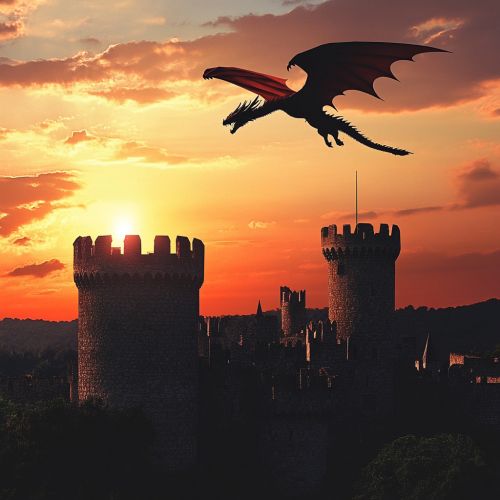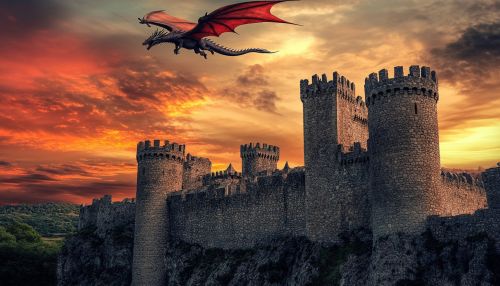Historical Fantasy
Introduction
Historical fantasy is a subgenre of fantasy that incorporates elements of historical narratives with fantastical elements. This genre blends the imaginative and the factual, creating a narrative that is both familiar and otherworldly. It often involves the reimagining of historical events, settings, or figures, infusing them with magical or supernatural elements. Historical fantasy can provide a unique lens through which to explore history, offering new perspectives and interpretations of the past.
Characteristics of Historical Fantasy
Historical fantasy is characterized by its dual focus on historical authenticity and imaginative storytelling. It often involves meticulous research to accurately portray historical settings, customs, and events while simultaneously introducing fantastical elements such as magic, mythical creatures, or alternate histories. This genre allows authors to explore "what if" scenarios, providing a creative space to question and reinterpret historical narratives.
The blending of history and fantasy can vary significantly in historical fantasy works. Some narratives may closely adhere to historical facts, with minimal fantastical elements, while others may present a completely reimagined history where magic and myth are integral to the world's functioning. The balance between historical accuracy and fantasy is a defining feature of the genre.
Subgenres and Variations
Historical fantasy encompasses several subgenres and variations, each with its unique approach to blending history and fantasy:
Alternate History
Alternate history is a subgenre where historical events occur differently, leading to an alternate timeline. In historical fantasy, these divergences often involve magical or supernatural interventions. This subgenre allows for the exploration of how small changes could have significantly impacted historical outcomes.
Mythic Historical Fantasy
Mythic historical fantasy incorporates elements of mythological narratives into historical settings. This subgenre often explores the intersection of myth and history, reimagining historical events through the lens of ancient myths and legends. It can involve the presence of gods, mythical creatures, or legendary heroes within a historical context.
Historical Urban Fantasy
Historical urban fantasy is set in historical urban environments, blending the gritty realism of historical cities with fantastical elements. This subgenre often explores the hidden magical underworlds within historical settings, where supernatural beings coexist with humans.
Notable Works and Authors
Historical fantasy has a rich literary tradition, with numerous authors contributing to its development. Some notable works and authors include:
Susanna Clarke
Susanna Clarke's novel "Jonathan Strange & Mr Norrell" is a seminal work in historical fantasy. Set during the Napoleonic Wars, the novel explores the revival of English magic through the lives of two magicians. Clarke's meticulous attention to historical detail, combined with her imaginative storytelling, has made the novel a classic in the genre.
Naomi Novik
Naomi Novik's "Temeraire" series is a blend of historical fantasy and alternate history. Set during the Napoleonic Wars, the series introduces dragons as integral to military strategy. Novik's work is notable for its detailed historical research and innovative integration of fantastical elements.
Guy Gavriel Kay
Guy Gavriel Kay is renowned for his historical fantasy novels that draw inspiration from real historical periods. His works, such as "The Lions of Al-Rassan" and "Tigana," explore themes of cultural conflict and identity, blending historical settings with magical realism.


Themes and Motifs
Historical fantasy often explores themes of power, identity, and the intersection of the past and present. The genre allows authors to examine historical power dynamics through a fantastical lens, questioning the nature of authority and control. Themes of identity are also prevalent, as characters navigate the complexities of cultural and personal identity within historical contexts.
Motifs such as time travel, alternate realities, and mythical creatures are common in historical fantasy. These elements serve as vehicles for exploring the consequences of historical actions and the fluidity of history itself.
Cultural and Historical Impact
Historical fantasy has a significant cultural and historical impact, offering new ways to engage with history. By reimagining historical events and figures, the genre encourages readers to question established narratives and consider alternative perspectives. It can also serve as a tool for cultural critique, highlighting historical injustices and exploring themes of resistance and resilience.
The genre's popularity has led to adaptations in various media, including film, television, and video games. These adaptations often bring historical fantasy to a broader audience, further expanding its cultural influence.
Challenges and Criticisms
Despite its popularity, historical fantasy faces challenges and criticisms. One of the primary criticisms is the potential for historical inaccuracies or anachronisms. While the genre allows for creative reinterpretation, it also requires a careful balance between historical authenticity and imaginative storytelling.
Another challenge is the risk of cultural appropriation, particularly when authors draw on historical or cultural elements outside their own experience. Sensitivity to cultural contexts and a commitment to respectful representation are essential in addressing these concerns.
Conclusion
Historical fantasy is a dynamic and multifaceted genre that offers a unique blend of history and imagination. By reimagining the past, it provides new perspectives on historical narratives and encourages readers to explore the complexities of history. As the genre continues to evolve, it remains a vital space for creative exploration and cultural reflection.
